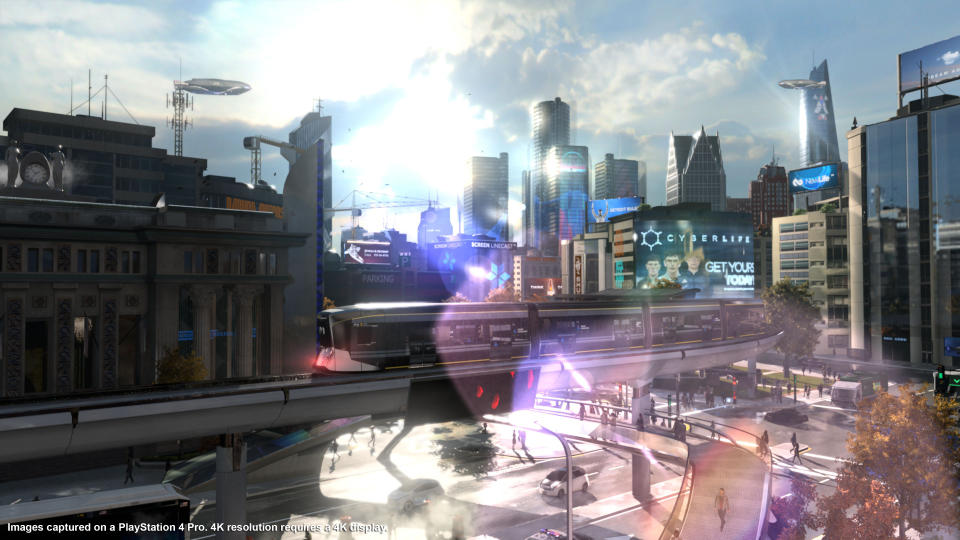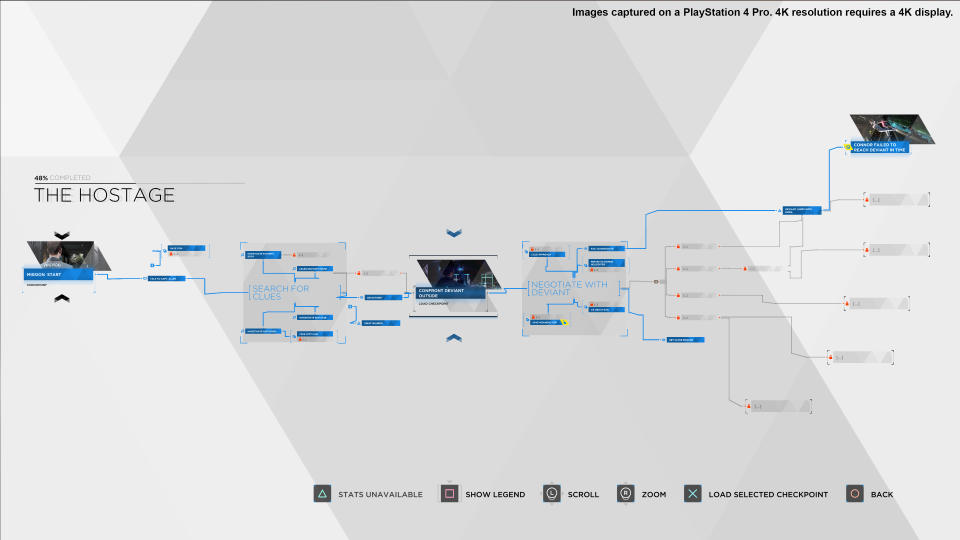'Detroit: Become Human' is a game where your choices matter
Artificial intelligence and robotics are advancing at an ever-increasing clip. Still, we’re decades away from the kind of AI-powered humanoids that can rival our own cognitive and physical capabilities. But when that time does come, how will society react to these man-made creatures? And how will they react to us?
Those are the exact questions developer Quantic Dream explores in its upcoming Sony (SNE) PlayStation 4 exclusive “Detroit: Become Human.” Set in 2038, “Detroit” lets you play as three different androids as they learn to live in a world that’s conflicted with how to react to and work with these high-tech creations.
I played two hours of “Detroit” during a demo session, and sat down with director David Cage to discuss how Quantic Dream crafted the not-too-distant future of the game and explore it for myself.
Grounded in reality
If you’re thinking about a game about androids, chances are you’re picturing a title set 100 or more years from now where interstellar travel is the norm and we all inexplicably wear skin-tight space uniforms. But for Cage and team, the goal with “Detroit” was to ground the player in reality.

To do that, Quantic Dream set “Detroit” just 20 years in the future, in the year 2038. As a result, the world still looks a lot like it does today, but with some added high-tech features. Autonomous vehicles roam the streets, police drones hover overhead and androids walk among us.
Each of the three characters I played in “Detroit” were androids living in the titular city under vastly different circumstances. One serves as a negotiator, one a homemaker and one a companion and helper. The narrative structure sees you jump between each character’s plot line, ensuring the story never lags. It also breaks down into smaller, bite-sized portions that you can finish without taking up your entire evening.
In the first scene, I played as Connor, a negotiator tasked with talking a family’s deviant android out of jumping off of a building with a child. The game throws you right into the thick of things, making you use Connor’s ability to scan different pieces of evidence and items of interest to determine how this android became deviant and what you can do to save the child.

Like much of my “Detroit” demo, you spend time exploring around a relatively contained environment, while manipulating various items using the right joystick. It’s a similar approach that Quantic Dream has used in its previous titles, making the story the focus of the game rather than the action.
Character movement felt a bit heavy and stilted at times, and I found myself accidentally moving rather than interacting with an object on occasion, but it wasn’t a frequent issue.
Quick-time events also showed up often while playing as Connor and as the android Kara, the character Quantic Dream created for a tech demo in 2012, which lead to the making of “Detroit.” Quick-time events have largely gone out of fashion in the game industry after being far too overdone during the PlayStation 3 era, but it works with a game like “Detroit” that provides a more cinematic experience than a traditional title.
Motion-capture androids
Quantic Dream is known for its work in using motion-capture techniques to hire high-profile actors from the television and movie industry to bring its games’ various characters to life. In “Beyond: Two Souls,” Quantic Dream used the technology to capture the performances of Ellen Page and Willem Dafoe. But with the power of the PlayStation 4, the company was able to drastically improve the look of its characters.

“Grey’s Anatomy” star Jesse Williams, for instance, plays the Android Markus, which looks like a near clone of the actor. From skin textures to hair and even the way facial muscles move, “Detroit’s” characters look absolutely incredible. There’s still a bit of that uncanny valley look in their eyes, but it’s far from a distraction.
The world you navigate as one of the three android is equally stunning. World building in the game is done through traditional character interactions, magazine articles and TV news clips, which help establish how humans feel about androids.
Workers who’ve lost their jobs and the homeless blame the androids for their situations and even attack the creations. But it’s clear that the androids are more than just machines. They recognize when they’re being antagonized, or mistreated just as a human would. So you’re forced to sympathize with both the workers who lost their livelihoods and the androids that were created to do just that. It’s an interesting dichotomy that I expect will have implications for the final game.
Branching out
Speaking of implications, “Detroit: Become Human” features a new visible flowchart feature that shows you how each decision and path you’ve chosen in the game impacted the characters’ outcomes.

The idea of a branching path mechanic isn’t new to games, it’s commonly used in the industry, but for “Detroit” Cage said he wanted to surface the feature to give players a better view of what their decisions mean for the characters and the interactions they have.
Throughout the game, you’ll occasionally see small locks unlock when you perform a certain task or ask another character a certain question. This means that a new branch of the flowchart has been opened for you to explore. The game doesn’t tell you what the branch does, just that you’ve been given the option to do something different than you otherwise would have been able to.
Once you complete a mission, however, the game reveals the entire flowchart and shows you how each small decision you made, such as picking up a few dishes or making breakfast, impacted your outcome.
“Here with “Detroit” we thought, ‘Okay, we need to expose this to the player, show the flowcharts, so they understand what they’ve done in the narrative, but also all of the things they’ve missed,’ ” Cage explained.
The first time I saw one of the flowcharts, I instantly wanted to go back and replay the mission, to unlock everything I missed, which was a lot. But since every decision you make changes the way the game plays down the line, I didn’t want to impact my endgame.
Cage said he has no clue as to how many different decisions and branches players can open up, and added that while some players may never even see certain scenes, it was important for Quantic Dream to create them so that every player’s experience is different.
Much of the story I played so far focused on some heavy subject matters ranging from discrimination to domestic violence and murder. The game’s atmosphere and music further heighten tensions for the player, making already stressful situations feel even more so.
I only played two hours of the game so far, and was hooked on the possibilities that lie ahead for the three characters I saw. It’s safe to say that “Detroit” is shaping up to be a unique experience that should outdo its predecessors. We’ll find out for sure though when “Detroit” hits store shelves on May 25.
More games news:
‘Kirby Star Allies’ review: How to make friends and eat them
Despite Trump’s meeting, video games and violence still don’t add up
Email Daniel Howley at [email protected]; follow him on Twitter at @DanielHowley.
Follow Yahoo Finance on Facebook, Twitter, Instagram, and LinkedIn
